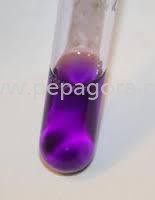A K Chemi Dyes Enterprises
Product Range
Fact Sheet
- Location:Maharashtra, India
- Year of Establishment:1991
- Business Type:Manufacturer, Exporter, Importer
- Main Products:Basic Rhodamine B Extra, Basic Malachite Green - Powder
- Reviews & Rating:
Get Verified, Sell more with
- Buyer's trust
- Faster conversions
- Better Rankings
- More
Its Free
Verify NowBasic Dyes
Basic dyes are the class of dyes, that are most commonly synthetic.. They can be made so with the base being converted into a salt. At the chemical level, basic dyes are typically cationic or positively charged.
- FOB PriceNA
- Min Order QuantityNA
- Payment TermsNA
Other Details
Basic dyes are the class of dyes, that are most commonly synthetic.. They can be made so with the base being converted into a salt. At the chemical level, basic dyes are typically cationic or positively charged. Basic dyes display cationic functional groups like -NR3+ or =NR2+. Since basic dye is a stain that is cationic or positively charged and it is the reason that it reacts well with material that is anionic or negatively charged
Basic dyes have an extensive use for dyeing of cut flowers, dried flowers, dyeing of jute, coir etc. If the reason behind the success of Basic dyes is analysed, it would be seen that the positively charged cations of the Basic dyes gets attracted towards the negatively charged anions in the acrylic fiber. Acylic polymers have anionic groups attached to it. They are most commonly the sulphonate group, -SO3-, followed closed by the carboxylate group, -CO2-. This reaction of the cation and anion results in salt linkages. Basic dye do not show absolutely any migration in acrylic fibers under normal dyeing conditions. Basic dyes also find its use in colouration of papers.
Advantages of Basic Dyes
High Tinctorial strength
Moderate substantivity
Relatively economical
Wide shade range
Includes some of the most brilliant synthetic dyes
Shows good brightness
Limitations of Basic Dye:
Poor shade stability
High acid content
Colored backwaters
Very poor light fastness
Preferential dyeing
Images


















